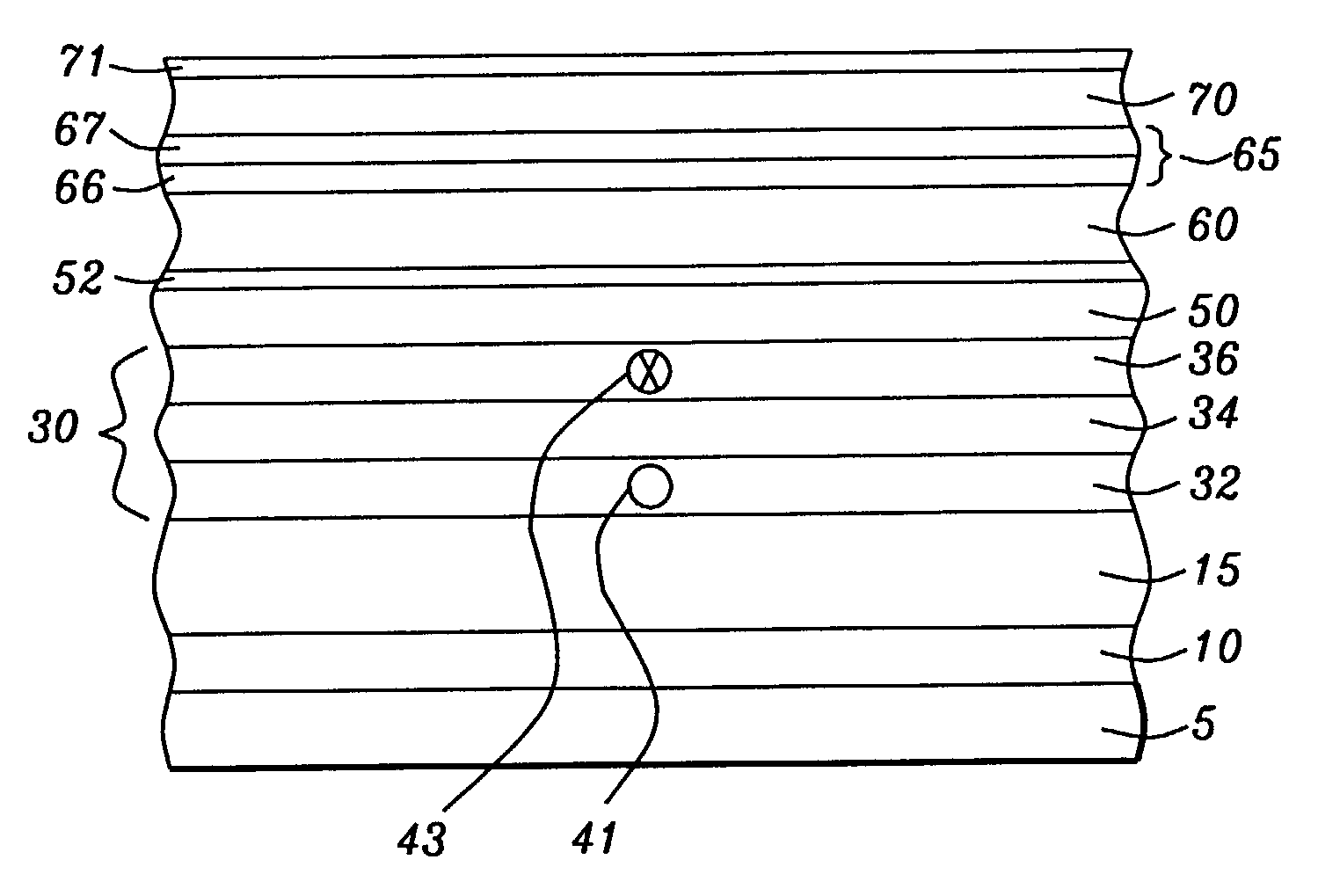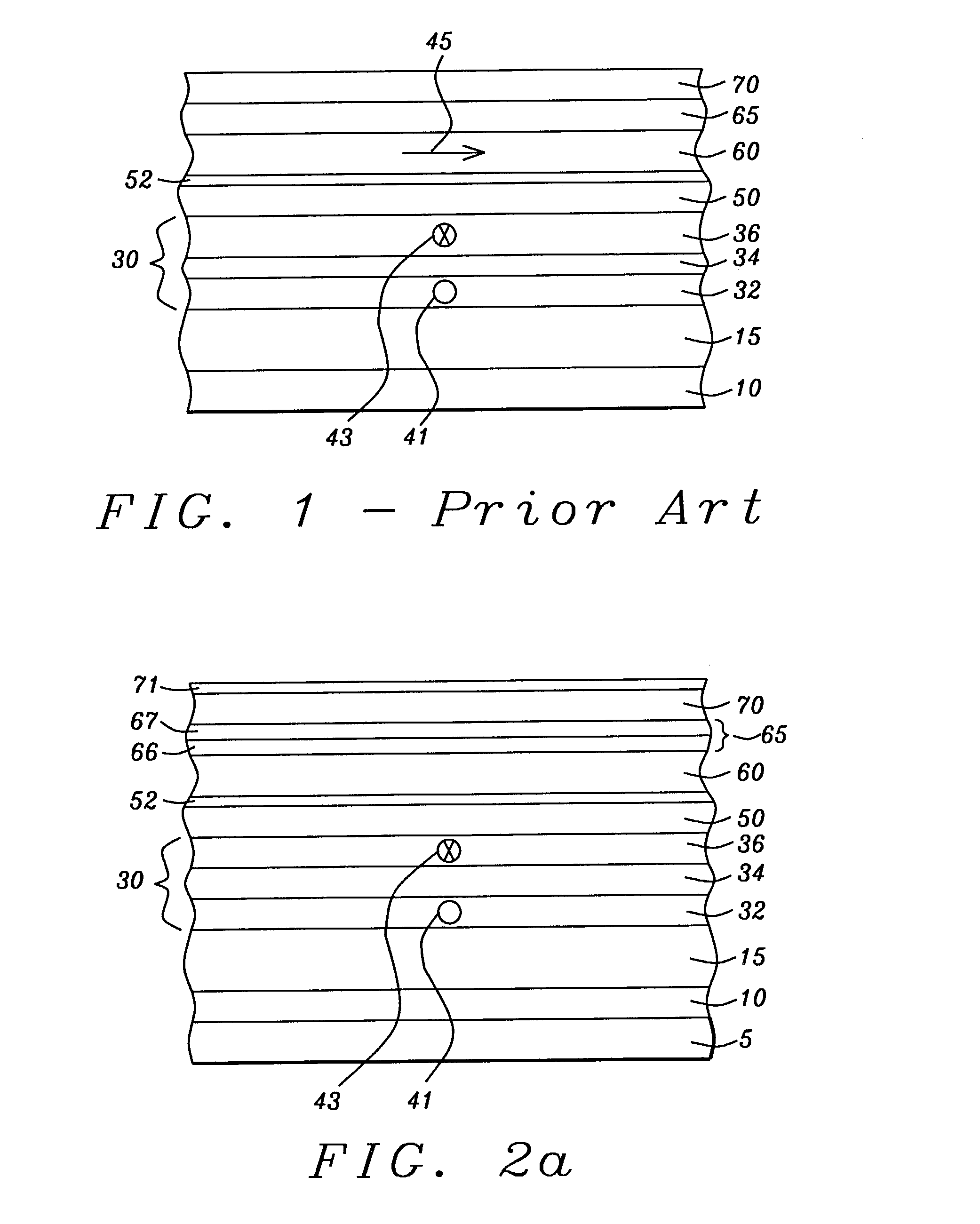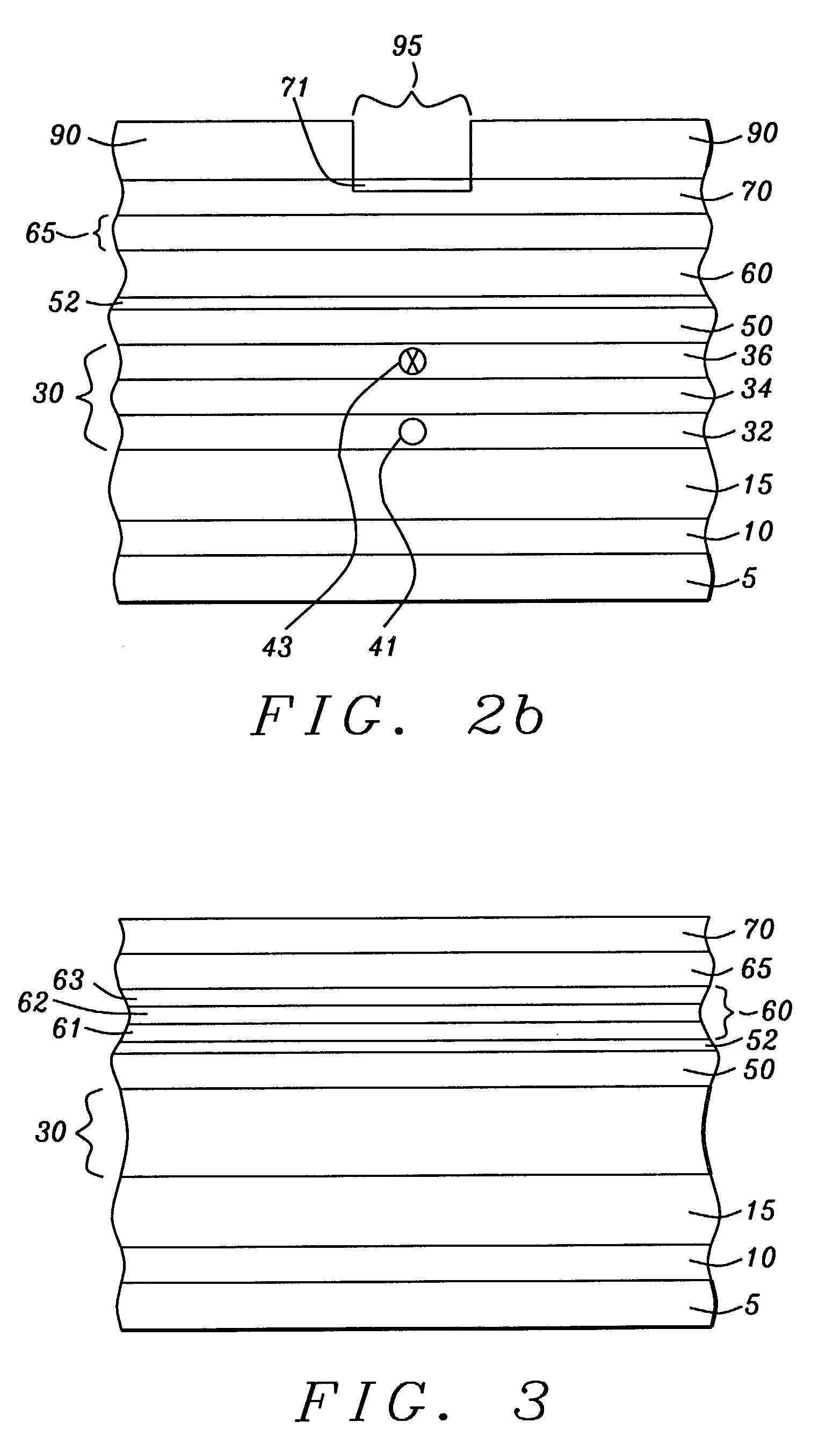Method of making a bottom spin valve
a bottom spin valve and spin filter technology, applied in the field of gmr read head of the bottom spin valve structure, can solve the problems of adversely affecting the biasing, difficult to obtain a controllable bias point, and high gmr ratio (dr/r), and achieve the effect of enhancing the gmr ratio (dr/r) of the sensor, enhancing adhesion, and enhancing the anti-parallax configuration energetically favorabl
- Summary
- Abstract
- Description
- Claims
- Application Information
AI Technical Summary
Benefits of technology
Problems solved by technology
Method used
Image
Examples
Embodiment Construction
[0023]To meet the objects of the present invention, the generic configuration of FIG. 1 will be replaced by either of the following preferred layer configurations i) and ii), each formed on an appropriate substrate (which is not indicated below):[0024]i) NiCr(55) / MP(100) / CoFe(13) / Ru(7.5) / CoFe(15) / Cu(18) / SL / CoFe(20) / Cu(5) / Ru(7.5–10) / Ta(10)[0025]ii) NiCr(55) / MP(100) / CoFe(13) / Ru(7.5) / CoFe(15) / Cu(18) / SL / CoFe(17) / Cu(3) / CoFe (3) / Ru(7.5–10) / Ta(10)
wherein the numbers in parentheses are preferred layer thicknesses in angstroms.
[0026]Referring first to FIG. 2a, there is seen in a schematic cross-sectional view the stack configuration described in i) above. Unlike the prior art of FIG. 1, this stack includes a single CoFe free layer (60) and a composite Cu / Ru high-conductance layer (65). Moving vertically upward in the figure, there is first seen a substrate (5) on which has been formed NiCr buffer layer (10), having approximately 40% Cr by atomic weight and formed to a thickness of between ap...
PUM
| Property | Measurement | Unit |
|---|---|---|
| thickness | aaaaa | aaaaa |
| thickness | aaaaa | aaaaa |
| thickness | aaaaa | aaaaa |
Abstract
Description
Claims
Application Information
 Login to View More
Login to View More - R&D
- Intellectual Property
- Life Sciences
- Materials
- Tech Scout
- Unparalleled Data Quality
- Higher Quality Content
- 60% Fewer Hallucinations
Browse by: Latest US Patents, China's latest patents, Technical Efficacy Thesaurus, Application Domain, Technology Topic, Popular Technical Reports.
© 2025 PatSnap. All rights reserved.Legal|Privacy policy|Modern Slavery Act Transparency Statement|Sitemap|About US| Contact US: help@patsnap.com



